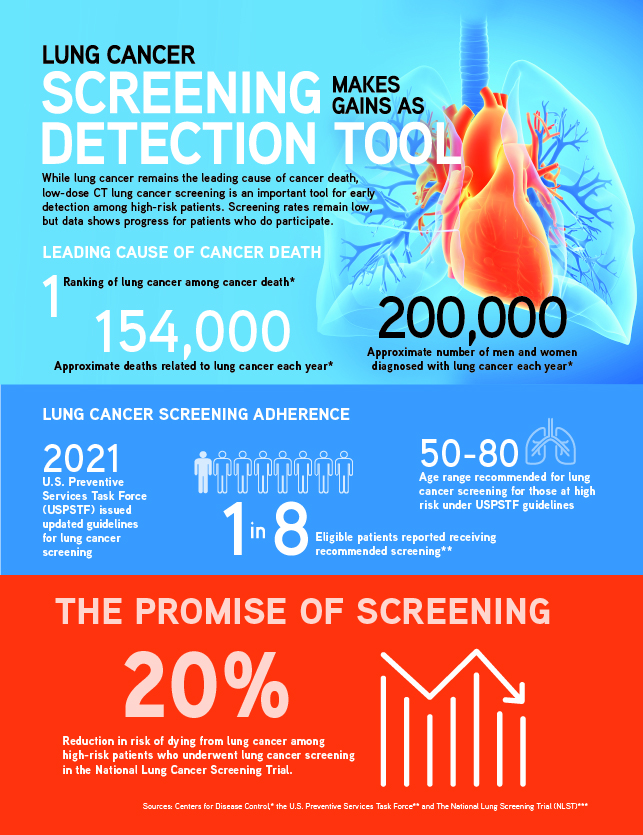Lung Cancer Screening Makes Gains As A Detection Tool
Many patients already have metastatic disease at diagnosis
Lung cancer remains the leading cause of cancer mortality in the United States. Screening for lung cancer can help reduce mortality by detecting cancers at earlier stages when they are more treatable.
Lung cancer screening with low-dose CT reduces mortality among high-risk current and former smokers and has been covered by public and private insurers without cost sharing since 2015. The U.S. Preventive Services Task Force (USPSTF) updated its recommendation statement for annual screening for lung cancer with low-dose CT and recommends annual lung cancer screening in adults aged 50 to 80 years who have a 20 pack-year smoking history and currently smoke or have quit within the past 15 years.
While patients and referring providers confront numerous barriers to participation in screening, there continues to be an uptick in lung cancer screening participation.
Read recent RSNA News articles on lung cancer screening:
- Social Determinants in Lung Cancer Screening Compliance
- Mammography Patients are an “Untapped Opportunity” to Increase Lung Cancer Screening
- Lung Cancer Screening Images Used to Identify Heart Conditions
Read the Radiology commentary, “Barriers to Lung Cancer Screening Engagement from the Patient and Provider Perspective.”
